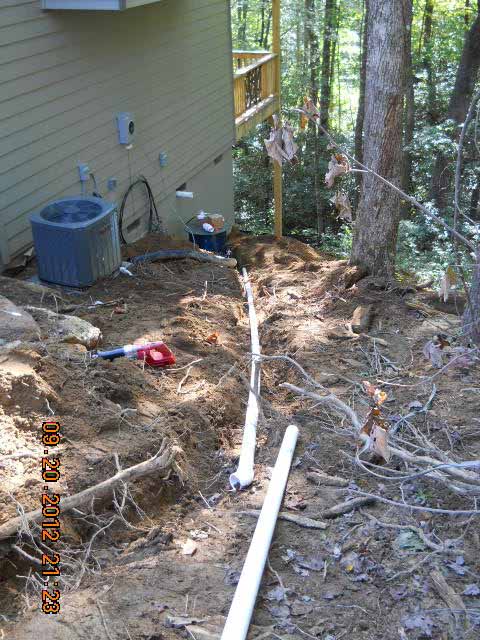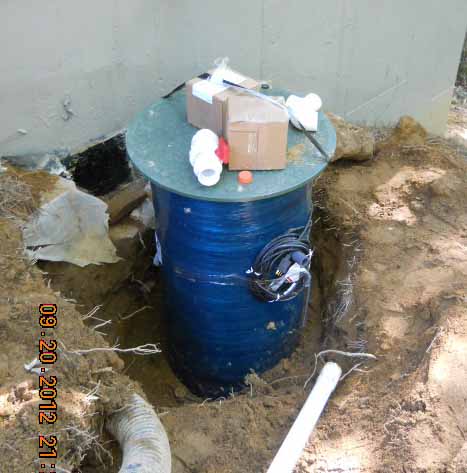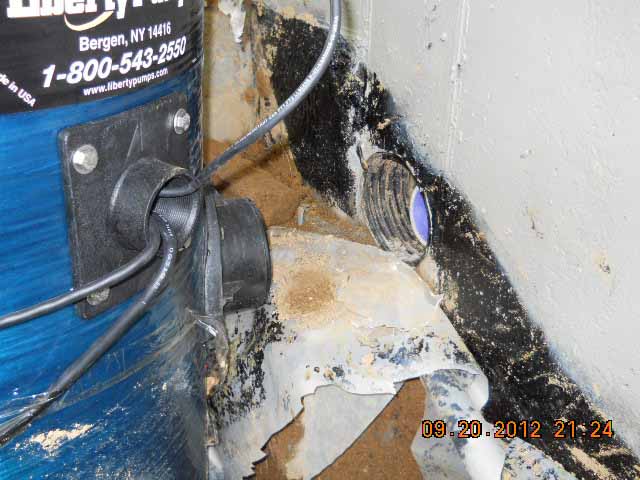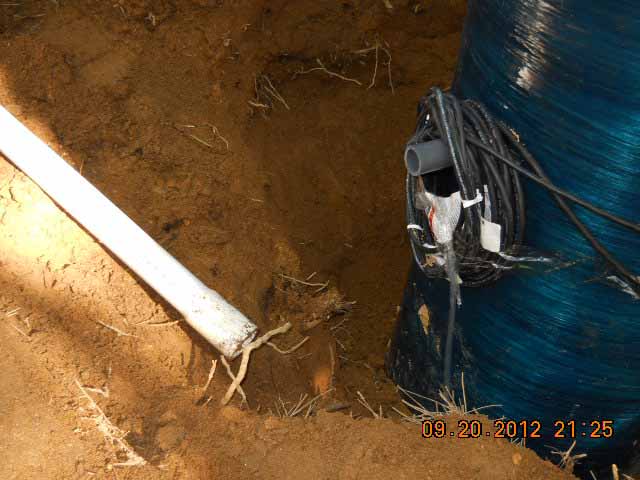This is one of those unglamorous hard core posts about the kind of thing nobody wants to think about until there is a problem. Septic grinder pumps and force mains for sewers are becoming more common as lot sizes shrink, meaning there is not always room for a septic drain field, so a centralized sewer processing facility may be necessary for certain communities, remote from the neighborhoods.
As Lots Shrink, Grinder Pumps Become More Common
When houses are built with lower levels, such as often happens in sloping terrain, typical in mountainous regions, or where there are steeper lots, the lowest drain for water in the house often is at a level that makes it impossible to gravity drain to a sewer line, or possibly even a septic field, if the sewer effluent line is lower than the sewer drain line connection.

Therefore, the typical solution is a septic grinder pump that pumps the liquified sewage up hill through piping underground, and to a valve box near to the street or other location of the force main for sewage. Then the valve box connects piping to the force main. There is often a force main, which means it is under pressure, because there may be topographic situations that makes it impossible to gravity drain all the sewage connections back to the sewage treatment facility. In other words: gravity won’t work, because there are ups and downs along the path back to the plant. Therefore, pressure in the sewage main pushes the sewage back to the plant for treatment.
The grinder pump normally has a backflow preventer in the piping to prevent sewage from the influent (the pipe conducting sewage into the pump) from backing up under suction circumstances into the house from which it came.
And there is typically another valve box about a foot or so away from the grinder pump to allow workmen to turn off the flow to the force main from the pump. So, there are several check points to allow for maintenance and protect the consumer’s health.

The sewage grinder pump is typically buried a couple of feet away from the house’s foundation wall, near to where the main sewage drainage pipe (from gravity) penetrates the foundation wall and enters the grinder pump influent port. In some states, for a 3 bath house, this may be a 3″ schedule 40 PVC pipe, passed through a slightly larger pipe through the foundation wall, to protect the pipe from cracking during possible foundation settlement. Depending on plumbing code in a given jurisdiction, for a 4 bath house, a 4″ waste pipe may be required. Check with your local licensed plumber to verify your requirements.
.

The effluent pipe (the waste line leaving the grinder pump) may be a 2″ PVC Schedule 40 pipe (depending on your circumstances), as is the force main pipe exiting this pump in the photo. In this situation, this pipe could be as close to the surface as 3″, however it was buried about a foot down. Potable water pipes are always supposed to be buried below the frost line, which can exceed 30″ to 36″ in some jurisdictions or even more, in colder locations. However, there is evidently not as much concern about freezing of rapidly moving waste fluids in a force main. It is still water, sitting in a pipe over night, as is the case with potable (clean drinking water) that can pose more of a freezing issue and why those pipes must be buried much farther down into the earth.

For more information, visit the Home Architects website at: www.HomeArchitects.com or phone Rand Soellner, ArCH/NCARB at: 1-828-269-9046, or e-mail: Rand@HomeArchitects.com
tags: custom residential architect, cashiers, aspen, telluride, atlanta, hendersonville, lake toxaway, highlands, lake glenville, newnan, post and beam
